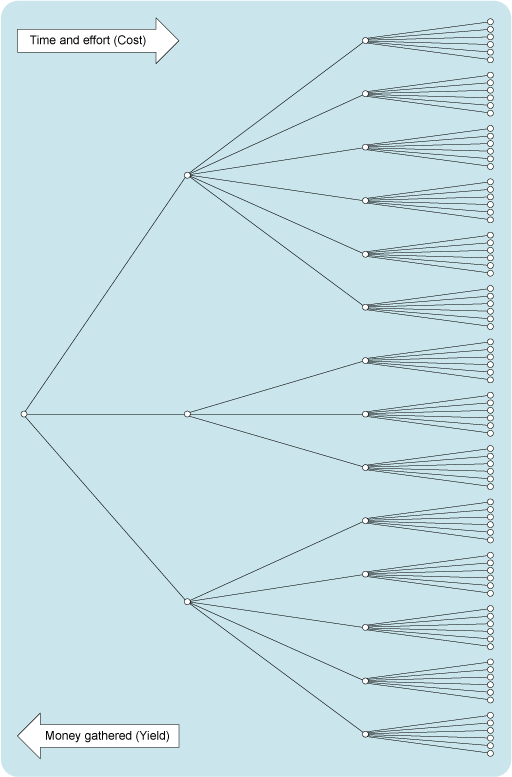2.4 The contribution multiplier
One mistake inexperienced fundraisers often make is to think they have to do all the work themselves. However, the most effective way to get resources is not only to ask other people to help with either money or time, but also to ask them to ask their friends to help – this is known as the contribution multiplier (see Figure 4).
A good example of the contribution multiplier is a sponsored event. For example, a marathon where people who take part not only pay a fee to enter, but also ask some of their friends and relations to sponsor them to complete the event. This both reduces the time and effort you need to put into contacting potential supporters and increases the amount of resources you can get, as others will ask more people than you could possibly contact. Their chances of success are also likely to be higher as they will often be asking people they know to sponsor them.
If you think back to Activity 1, Anna talked about the importance of involving different people in her fundraising team and how this brought in new people over time. She described it as a ‘snowball effect’, which is similar to the multiplier effect.
You will now look at what might be involved in fundraising for particular projects or activities through writing an application for funding.

